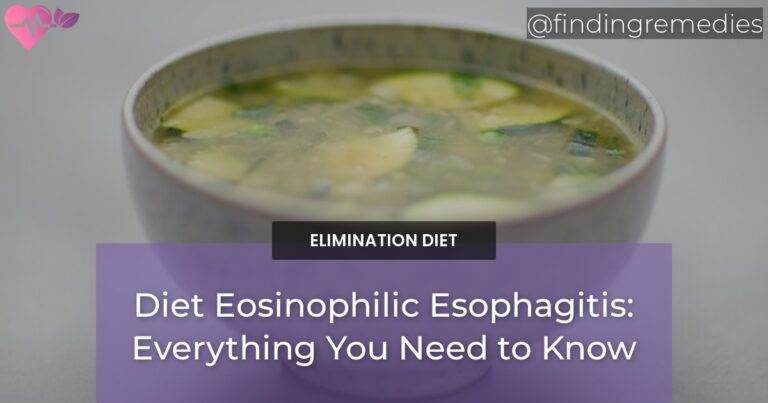It can be very difficult to make changes to your diet, especially when you have a medical condition such as eosinophilic esophagitis (EoE). This condition affects the esophagus, the tube that connects the mouth to the stomach, and causes inflammation of the tissue. Symptoms can include difficulty swallowing, chest pain, and heartburn. Fortunately, there are dietary changes you can make to help manage your symptoms.
In this article, we’ll discuss the diet for eosinophilic esophagitis, and how it can help you reduce inflammation and improve your quality of life. We’ll go over the foods that are safe to eat, as well as the ones to avoid. What is Eosinophilic Esophagitis (EoE)?
What is Eosinophilic Esophagitis (EoE)?
Eosinophilic esophagitis (EoE) is a chronic medical condition that affects the esophagus, the tube that connects the mouth to the stomach. EoE is a type of inflammation that is caused by the accumulation of certain white blood cells that are called eosinophils. The accumulation of eosinophils in the esophagus can cause a variety of symptoms, including difficulty swallowing, chest pain, and heartburn. EoE can affect people of all ages but is more commonly diagnosed in children and young adults.
Table of Contents
Understanding an Elimination Diet for Eosinophilic Esophagitis
What is an elimination diet for eosinophilic esophagitis patients?
An elimination diet is a dietary intervention that involves removing certain foods from a patient’s diet for a specific period of time. The goal of an elimination diet is to identify the specific foods that trigger symptoms of EoE. Once the trigger foods have been identified, they can be permanently removed from the patient’s diet.
How does an elimination diet help eosinophilic esophagitis patients?
Elimination diets can help EoE patients by reducing the inflammation in the esophagus. By removing the foods that trigger EoE symptoms, patients can reduce the number of eosinophils in their esophagus and alleviate their symptoms.
Why is an elimination diet important for eosinophilic esophagitis patients?
An elimination diet is important for EoE patients because it is a non-invasive and effective way to manage their symptoms. By identifying the trigger foods, patients can avoid flares and reduce their dependence on medication.
How long should a patient follow an elimination diet for eosinophilic esophagitis?
The duration of an elimination diet for EoE patients can vary depending on the severity of their symptoms and the number of trigger foods. Most patients follow an elimination diet for 6-8 weeks before reintroducing certain foods.
Food Triggers of Eosinophilic Esophagitis
What should a patient avoid in a diet for eosinophilic esophagitis?
Patients with EoE should avoid foods that trigger their symptoms. These can include:
- Dairy products
- Wheat
- Eggs
- Soy
- Seafood
- Nuts
- Tree nuts
- Peanuts
What are the common food triggers of eosinophilic esophagitis?
The most common food triggers of EoE include milk, soy, wheat, and eggs. However, each patient may have different trigger foods and may need to undergo testing to identify them.
What are the alternative foods for eosinophilic esophagitis patients?
Patients with EoE can consume a variety of alternative foods that are not trigger foods. Some examples of alternative foods include:
- Rice milk
- Almond milk
- Gluten-free bread
- Quinoa
- Vegetables
- Fruits
- Lean meats
Managing Eosinophilic Esophagitis Through Diet
Can eosinophilic esophagitis be managed through diet alone?
EoE cannot be cured through diet alone but can be managed through a combination of dietary intervention and medical treatment. Patients may need to take medication to manage inflammation and symptoms.
Is there any medical supervision required during an elimination diet for eosinophilic esophagitis?
Medical supervision is recommended during an elimination diet for EoE patients. Patients should work with a registered dietitian and their healthcare provider to ensure that their diet is nutritionally adequate and that their symptoms are being effectively managed.
ALSO READ
Benefits of an Elimination Diet for Eosinophilic Esophagitis Patients
What are the benefits of an elimination diet for eosinophilic esophagitis patients?
The benefits of an elimination diet for EoE patients include:
- Reduced symptoms of EoE
- Identification of trigger foods
- Reduced dependence on medication
- Improved quality of life
Conclusion
Eosinophilic esophagitis is a medical condition that can be effectively managed through a combination of dietary intervention and medical treatment. An elimination diet can help identify trigger foods and reduce symptoms. Patients should work with a registered dietitian and their healthcare provider to ensure that their diet is nutritionally adequate and that their symptoms are being effectively managed. By following an elimination diet, EoE patients can improve their quality of life and reduce their dependence on medication.
RELATED ARTICLES:

